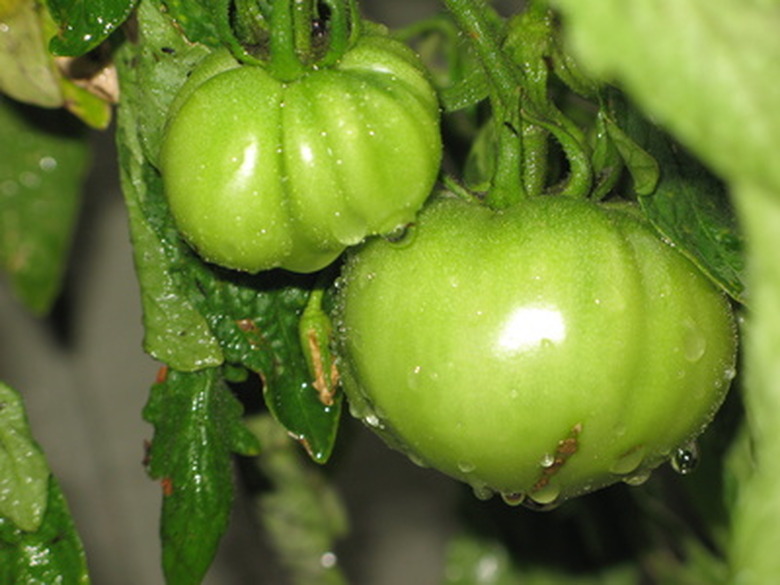How To Save Wilted Tomato Plants
It can feel devastating to spend a lot of time cultivating your tomatoes to find that your plants have started to wilt. Wilt can be a sign of many different problems that include bacteria, watering, viruses or insects. When your plants begin to wilt there's no reason to give up on them. There are several things you can do to find the source of wilting and to help revive your plants. Tomato plants that have wilted can be saved in most circumstances.
Step 1
Check to make sure there are no walnut trees within 25 feet of your tomato plants. The chemical in walnuts called juglone is toxic to plants. Tomatoes are especially sensitive to juglone and will wilt if exposed to it. Transplant tomato plants to another area if there is a walnut tree nearby.
- It can feel devastating to spend a lot of time cultivating your tomatoes to find that your plants have started to wilt.
- There are several things you can do to find the source of wilting and to help revive your plants.
Step 2
Water your tomato plants immediately. Keep an eye on them for the next 24 hours to see if that solves the wilting problem. Tomatoes wilt when they don't get 1 inch of water a week; they need more water when it is especially dry and hot.
Step 3
Check the soil around your plants for fungus. You will see a line of white mold around your plants. Remove and transplant your plants to another area if they are infected.
Step 4
Pull and destroy dead plants if you suspect insects or a virus is affecting your tomatoes. This will save your other tomato plants. Identify if a stalk borer is infecting your plants by looking for a purple-and-cream-colored caterpillar. Remove any caterpillars you find on your plants. Keep the weeds mowed to prevent further infestation.
- Water your tomato plants immediately.
- Pull and destroy dead plants if you suspect insects or a virus is affecting your tomatoes.
Step 5
Check for bacterial infections if you can't find any other reason your plants are wilting. Cut off a lower stem on each plant. You will see a brown discoloration inside of your plants if they have fusarium bacteria and a light brown color if they have the verticillium bacteria. Remove and destroy any infected plants to save your remaining tomato plants. Avoid overly wetting the soil to prevent further bacteria from getting to your plants. Make sure your soil is kept moist, but never soggy.
